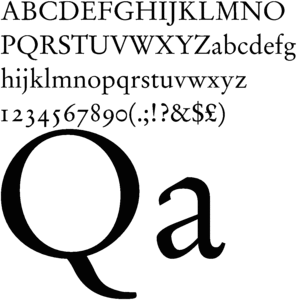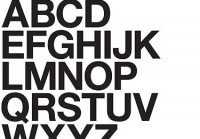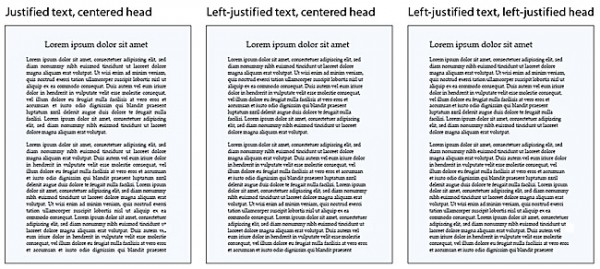Notes on Design: In Praise of Ragged Edges
I am a largely self-trained book designer. I hope to someday have the time to take formal courses in design, but for now I do my learning by studying the books I read. This means that often I will come across a convention in book design that I simply do not understand. These conventions are not universal, but they are common. Indie and major presses seem to agree, for instance, that text should be blocky. In fact, the text of this website is mostly blocky.
What I am talking about is justification. At some point, nearly all the book designers in the US got together and decided that the proper alignment for prose was left-justified. What does a left-justified paragraph look like? Well you are reading one now. The left edge of the paragraph is aligned with the left margin, and the right edge of the paragraph is aligned with the right margin. The last line of the paragraph breaks this rule, because it would require extreme distortion of the text to ensure it met the right edge (the last line might be, after all, just one word long, and we don’t want to see that stretched all the way from left to right). But here’s the thing: essentially every line has to be distorted at least a little to make the edges match up right, and once you see this, it can be very hard to un-see it. The spaces between words and individual characters swell and shrink according to the needs of the line. You may find yourself struggling to read an especially crowded line; you may find yourself wondering why the spaces between the letters in the word “between” are so big. Words that disrupt the shape of the text too much become hyphenated in order to stop them from causing trouble. Sometimes they even split across two facing pages. Sometimes this is not disruptive. But sometimes it gets very ugly. READ MORE >
Typography: an analysis
The online literature world can be broken down into two groups: the ‘Bookish’ and the ‘Sophisticated.’ These groups convey their partisanship with fonts. The font world is broken down into either serif (Times New Roman, Garamond, Georgia) or sans-serif (Helvitica, Veranda, Arial). Of course, there are overlaps, but I’m talking about ethos here baby, shit. From editorial discretion to readership disposition, there is no denying font type. Below is an in depth analysis on the demographics of font-people.
 I. BOOKISH
I. BOOKISH
‘Bookish’ people have a lot of books on their shelves and smell like libraries. They read a lot, often dense and abstruse stuff that ‘normal Walmart people’ won’t understand. When I list serif-populated websites, you will know exactly what I’m talking about: McSweeney’s, elimae, eyeshot, Prick of the Spindle, pequin, etc. See what I mean? Now can’t you just imagine a bunch of people wearing elbow patches w/ thick-ass glasses in Cambridge reading this stuff? They are very attached to the printed word — with those lyrical cursive-esque ‘thingies.’ These people are likely to drink herbal tea in the afternoon and cry occasionally. You will find an unread copy of Mason & Dixon on their shelf. They are often pale, white, and pudgy. They have uninspired, or even ‘bad’ sex because they are always thinking about grammar.
 II. SOPHISTICATED
II. SOPHISTICATED
There’s this documentary “Helvetica” which I found really annoying. It was all these Europeans who ‘went off’ on how they changed the world with that font. Helvetica (or Microsoft’s bastardized version Arial) is used everywhere (picture the Target or JC Penney logo). There’s this idea that sans-serif fonts are more modern and ‘with the times.’ Minimalism, from which sans-serif was derived, attracts cynical people. (None of the propagators were breast-fed.) Here are examples: Muumuu House, HTMLGIANT, No Posit, (most of) Bear Parade, Robot Melon, My Name is Mud, etc. See? Now can’t you just imagine a bunch of people sitting on $2000 design chairs with their German techno in the background eating freakin’ carpaccio off of square plates? These people do not believe in God.
Conclusion: The only non-annoying font-type is braille. : : . . : .
See what I mean?

